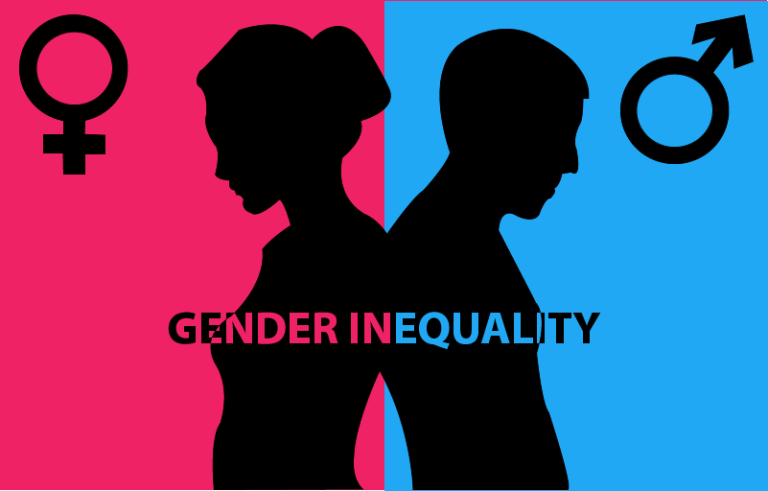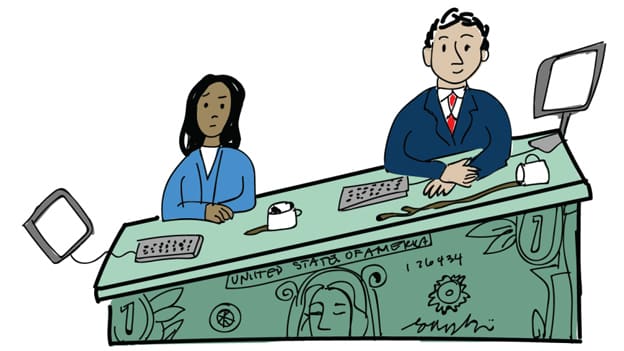Gender Inequality
Introduction
Gender inequality refers to the unequal
treatment as well as the negative perception of individuals with regards to their gender
(Lorber, 2012). It usually arises from discrepancies in socially constructed
gender roles and biologically through brain structure, chromosomes, and
hormonal differences. In most cases, gender inequality is dichotomous and
hierarchical and usually reflects the inequalities which manifest in various
aspects of human life (Barker, 2010). It stems from distinctions, both
empirically grounded and socially constructed. There are natural differences
between male and female based on biological as well as anatomic factors. The
main difference is notable when it comes to differing roles in reproduction
(Lorber, 2012). In addition, there is a natural difference in the physical
strength of both sexes.
In the modern world, gender inequality is common in the discrimination of women in many parts of the
world. The human rights of women in Middle East as well as North Africa face
denial by every country in the region, irrespective of diversity of their
political systems (Barker, 2010). Most of the governments in these nations
usually suppress the civil societies through restriction of freedom of press,
assembly and expression (Lorber, 2012). These restrictions affect both men and
women adversely.
Nevertheless, women are subject to human rights violations. For instance, penal, citizenship and family laws throughout this region downgrade women to a low status as compared to men. This gender discrimination undermines the full personhood of women as well as equal participation in society. In addition, it puts them at a potential risk of violence (Barker, 2010).
Nevertheless, women are subject to human rights violations. For instance, penal, citizenship and family laws throughout this region downgrade women to a low status as compared to men. This gender discrimination undermines the full personhood of women as well as equal participation in society. In addition, it puts them at a potential risk of violence (Barker, 2010).
There are various ways of exercising
gender inequality. Some of the most common ones include, restricting women from
driving, clothing requirements, right to divorce, access to education, right to
travel, victims of violence, custody rights, citizenship, sexual subjugation
and female infanticide among others. Most of these usually affect women in many
countries all over the world (Barker, 2010).
Income
inequality
Gender income inequality or gender pay
gap is the difference of income earning between male and female, expressed as a
percentage of the male earning (Gender inequality, 2012). According to reliable
research, it is true that the income gap in many situations is as a
result of the decisions made each gender but not but not explicitly due to
discrimination (Lorber, 2012). Nevertheless, there is still a continuous debate
on whether the significant wage gap in many situations is as a result of
explicit discrimination or not. In addition, the debate is focusing on the
extent which forces men as well as women to me particular decisions as a result
of social pressures.
Wage or income discrimination usually
exists in a situation where workers have equal qualifications and perform the
same tasks, but some get more pay than the others. Historically, it is a fact
that income discrimination always favors men over women (Gender inequality,
2012). Income differences between genders comes from the processes which
determine the quality of work as well as earning associated with that work.
Income earnings associated with the work done causes income inequality to take
the form with regard to placement of individuals into certain jobs by
individual qualifications (Lorber, 2012).
Placement of women and men into a
certain job categories without gender discrimination is possible through
embracement of human capital theories of qualifications of workers as well as
the biological disparities in men and women. On the other hand, placement of
both men and women into different job categories is as a result of social
status groups which aim at keeping their position by placements of those
workers in lower statuses to lower their paying position (Gender inequality,
2012).
With regards to Canada, it is a fact
that family income inequality is rising at a significant rate (John, 2007). The
Canadian government is ambiguous when it comes to income inequality because of
gender (John, 2007). The government is demonstrating a renewed interest through
compensating those who are unlucky. The increase in gender income inequality in
Canada is as a result of the growing gap between families. The gender income
difference is part of occupational segregation, where there is a distribution
of people across various occupations with respect to ascribed characteristics
(John, 2007).
Gender Inequality as a Source of Poverty
Poverty is one of the one of the key,
unsolved and overlooked social issue in many countries all over the world
(Lorber, 2012). Evidence of the problem of poverty is every corner of the
world. In almost all societies, it is evident that women have higher poverty rates
than men. When trying to get the possible causes of the significant gender
gap in poverty rates, it is important to understand that the measure of poverty
is at family or household levels (Lorber, 2012). The main cause of poverty
among women especially the single mothers is because of their lower earnings.
Due to the fact that single individual in most cases do not have adult family
members to transfer their income to them. Most of them rely on government
transfers (Ochs, 2008).
With reference to Canada, it is true
that the Canadian women are at a higher risk of landing into poverty than men (Ann
& Nancy, 2001). The reasons behind the impoverishment of women in Canada
are complex. However, these problems have a significant relationship with
traditional gender ideology, family law issues, inequalities in labor force and
the ways that people respond to marriage breakdown (Barker, 2010). In the past,
it is evident that there is an expectation from women to dedicate their lives
to unpaid duties as mothers and wives (Ann & Nancy, 2001).
Despite the fact that many women work
for pay, rules enacted against employments of married women, stigmatization,
and peripheralization reinforces the idea the proper place of women is actually
home. This idea came up in with a great force in the early 20th century (Ann
& Nancy, 2001). The movement of women increased chances for higher
education (Barker, 2010). This led to reduction in the family
size due to the legalization of contraception which helped in undermining
the traditional sexual division of labor (Ann & Nancy, 2001).
Substantial gender differences in work
as well as in family life continue to persist in various parts of the world.
Many mothers across the globe continue to take their time away from paid
employment during the time when their children are young (Barker, 2010). This
is contributing greatly to the increasing rate of poverty among many women all
over the world.
The
effect of Gender inequality on Self Esteem
Self esteem reflects the overall
evaluation of the worth of a person with regards to his or her overall
emotions. Self esteem is the discretion as well as the attitude towards oneself
(Gender inequality, 2012). It is usually encompass beliefs as well as emotions
including triumph, pride, shame and despair. Self esteem involves disposition
of what one has that represents his or her judgment of his or her own
worthiness (Julie & John, n.d). Gender inequality takes a very significant
part in lowering the self esteem of individual (Barker, 2010).
According to current research, the
findings indicate that women have lower self esteem as compared to men. Despite
the fact that both boys and girls have almost the same level of self esteem,
they diverge gradually during the teenage years and end even in adulthood (Gender
inequality, 2012). Boys usually gain a sense of positive self worth. One the
other hand, girls lose this sense of self worth.
In many societies, women and girls are
more socially judged than men and boys on the basis their physical appearance
(Lorber, 2012). In addition, girls as well as women usually take part in
various process of social comparison where they compare their physical beauty
to that of others. If a woman or a girl feels that she is less beautiful than
other women or girls surrounding her, there is a great negative effect on her
self esteem (Gender inequality, 2012). This is not the case when it boys
and men. This inequality usually lowers the self esteem of women which may
results to others social problems such suicide (Lorber, 2012).
Income gender discrimination may also
take a significant part in affecting the self esteem in of an individual
(Gender inequality, 2012). This mostly applies to women who are victims of
discrimination in various parts of the world. This occurs when men get higher
pay than women despite having the same workload in their jobs. This gender
discrimination makes women feel undermine and being of less worth (Barker,
2010). This in turn results to low self esteem, which greatly affect their
productivity in their line of production. In addition, denial of employments
because they have small children also affect their self esteem besides leading
to living a miserable life dominated by poverty.
Conclusion
Gender inequality is prevalent in many
cultures all over the world. In most cases, gender inequality involves
discrimination of women in the society in many aspects. Gender income
inequality arises in a situation where one person gets higher pay than another
despite the fact that they are performing the same tasks.
Gender discrimination on the side of the
women usually results to increase in poverty levels within the society. This is
because various forms of discrimination including income inequality as well as
total denial of employment opportunity makes the women fail to meet their
financial requirements. This in turn leads to increase in poverty levels.
It is a fact from above that gender
inequality usually results to low self esteem of individuals. This is because
this discrimination makes the individuals feel alienated as hence losing self
worthiness. This lowers their self esteem significantly which can further fuel
emergence of other social problems associated with low self esteem.
Taking the above into proper
consideration, it is evident that gender inequality causes a lot of harm to the
involved people especially women. With regards to this, people should take the
responsibility of eradicating gender inequality in various aspects of life
ranging from employment to other social responsibilities. Different organizations
should campaign against gender inequality, while empowering women to take part
equally in various responsibilities in the society including leadership.
Through this, gender inequality will be a theme of the past and women will have
equal opportunities as men.
References
Ann D and Nancy M, 2001, Meeting the
Challenges of the Twenty-First Century: Canadian Society: Oxford University
Press.
Barker, K. (2010, Nov 30). Gender inequality. Calgary Herald.
Retrieved from http://search.proquest.com/docview/816813114?accountid=35812
Gender
inequality. (2012, Jun 24). The Independent on
Sunday. Retrieved from http://search.proquest.com/docview/1021840058?accountid=35812
Lorber, J. (2012). Gender inequality: Feminist theories and politics. New York: Oxford
University Press.
Ochs, V. (2008, Gender inequalities. Tikkun, 23, 62-62. Retrieved from http://search.proquest.com/docview/212216860?accountid=35812
Duffy, A., & Mandell, N. (2011).
Poverty in Canada. In R. Brym (Ed.), Society
in
Question (6th ed., pp. 125-144).
McMullin, J., & Cairney, J. (2011).
How Gender, Class and Age Affect Self-Esteem. In
R. Brym (Ed.), Society in Question (6th ed., pp. 145-157).
Myles, J. (2011). Income Inequality and
Democracy. In R. Brym (Ed.), Society in
Question (6th ed, pp. 121-124).


Comments
Post a Comment